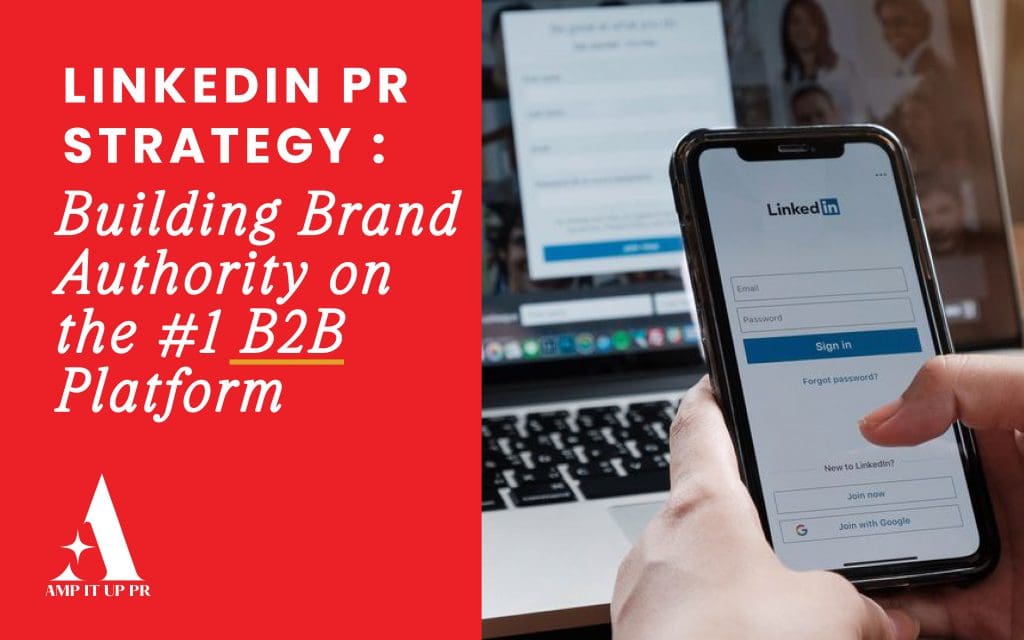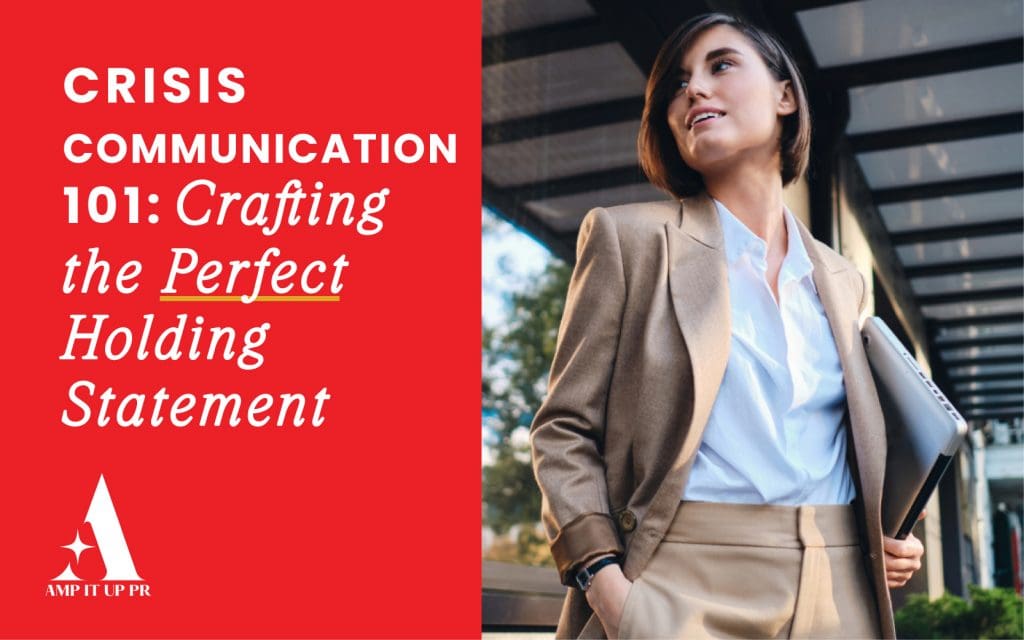In a Single Moment, a Brand’s Reputation Can Be Shattered. But It Can Also Be Rebuilt. The digital age has brought many benefits, but it also means a single mistake can become a global crisis in hours. A misstep, a bad review, or a public controversy can spiral into a storm of negative press and social media backlash, threatening everything a business has worked so hard to build. In this volatile environment, a PR crisis isn’t a possibility; it’s an inevitability.
So, when the worst happens and the headlines are all bad, where do you even begin? The key isn’t to hope the problem disappears. Instead, it’s to act swiftly and strategically. In fact, successful brand reputation repair isn’t about avoiding a crisis; it’s about mastering the steps to overcome one.
At AMP IT UP PR, we understand the chaos of a crisis. We also know that a strategic, well-executed response can not only repair a brand’s reputation but also strengthen it. Consequently, we’ve developed a proven framework for crisis management and reputation repair. Here are the five expert steps we use to help brands rebuild after a PR crisis.
Step 1: The Immediate & Honest Response (The First 24 Hours)
The first hours after a crisis breaks are the most critical. This is not the time for silence or denial. In fact, a slow or defensive response can be more damaging than the crisis itself. Your first priority must be to take control of the narrative, and the only way to do that is with a holding statement.
Communicate, Don’t Evade
Your holding statement is not a full explanation. Rather, it is a brief, honest acknowledgment of the situation. It should be released as soon as possible, often within an hour or two of the crisis going public. The statement should communicate three key things:
- Acknowledge the situation: Show you are aware of the problem.
- Show empathy: Express sincere concern for anyone affected.
- Promise an investigation: State that you are taking the matter seriously and will provide a full update soon.
This initial response manages public expectations and buys your team time to gather all the facts. It demonstrates accountability and professionalism. Moreover, it prevents the media from filling the vacuum of information with speculation.
Align Your Internal Team
While you’re drafting your public statement, it is equally important to align your internal team. All employees, from the CEO to the customer service representative, must be on the same page. A single conflicting message can erode public trust. Therefore, provide your team with a clear script and a single point of contact for media inquiries. This ensures a unified voice and prevents unauthorized comments from complicating the situation.
Step 2: Take Control of the Narrative
Once the initial dust has settled, the work of active reputation management begins. This phase is all about regaining control of the story and making sure your perspective is heard. After all, if you don’t tell your story, someone else will.
Leverage Your Owned Channels
Your website, blog, and social media channels are your most powerful tools. Use them to publish a detailed, honest explanation of the situation. This should include a summary of what happened, what you are doing to fix it, and what steps you’re taking to prevent it from happening again.
- Create a dedicated landing page or blog post: This provides a single, official source of truth. It can also be optimized for search engines, helping to push negative articles further down the search results.
- Pin the post to your social media profiles: This ensures that anyone visiting your pages sees your official statement first. It’s a proactive way to manage the immediate conversations.
Engage with Media Relations
Do not ignore media inquiries. Instead, treat journalists as professional partners. To that end, appoint a single, authorized spokesperson who is well-briefed and ready to answer questions. Providing timely, transparent information helps build credibility and, over time, can help you earn more balanced media coverage. A proactive media strategy involves reaching out to key journalists with your side of the story and providing them with an official statement, rather than waiting for them to come to you.
Step 3: Implement a Comprehensive Action Plan
Talk is cheap. In a PR crisis, actions speak louder than words. This step is about moving beyond statements and making real, tangible changes within your organization. This is a critical component of brand reputation repair.
Investigate and Fix the Root Cause
Get to the bottom of the problem. Was it a faulty product? A system error? A human mistake? Conduct a thorough investigation to identify the root cause of the crisis. For example, if the crisis was a data breach, your action plan should include:
- Hiring cybersecurity experts to identify vulnerabilities.
- Notifying affected customers and offering free credit monitoring.
- Implementing new security protocols and conducting a full security audit.
By openly sharing the results of your investigation and the steps you’re taking to fix the problem, you demonstrate transparency and a commitment to long-term improvement
Communicate Your Progress Publicly
Don’t just implement a plan; communicate it. Share updates on your website and social media. Show your audience that you are actively working to correct your mistakes. This is a key part of rebuilding brand trust. You can do this through blog posts, press releases, or even video updates from your leadership team. It helps transform a negative news cycle into a story of recovery and resilience.
Step 4: Engage Your Community & Rebuild Trust
Rebuilding a brand’s reputation isn’t a one-way street. It requires a two-way dialogue with your community. You must listen to their concerns and demonstrate that you value their feedback.
Monitor Social Media and Respond Thoughtfully
Don’t just post your statement and disappear. Monitor social media conversations closely. Then, respond to comments and messages, especially on public platforms.
- Show empathy: Thank people for their feedback and express regret.
- Don’t get defensive: Avoid arguing with angry customers. Instead, redirect conversations to a private channel (DMs or email) where you can address their specific concerns.
- Address misinformation: If false information is spreading, politely and factually correct the record.
Leverage Key Influencers and Brand Advocates
Once you have a clear plan and have taken corrective action, consider engaging with key influencers or brand advocates. These are people who have previously supported your brand and have a trusted voice within your community. However, this step must be handled with extreme care. Do not ask them to defend you. Instead, inform them of the steps you’ve taken and the changes you’ve made. Their voluntary support and positive commentary can be far more powerful than any paid advertising.
Step 5: Monitor, Learn, and Evolve
A crisis is a lesson. The final step is to learn from it and prepare for the future. Effective reputation management is an ongoing process, not a one-time fix.
Set up a Long-Term Monitoring System
Use media monitoring tools (like Meltwater or Cision) to track brand mentions, sentiment, and key topics. This will help you identify new problems before they escalate. It also allows you to track the progress of your brand reputation repair over time.
Update Your Crisis Communication Plan
A crisis is the ultimate test of your plan. Now that you’ve been through it, update your crisis communication plan with the lessons you’ve learned. What worked? What didn’t? Consequently, create a more robust system for the future. This includes:
- Identifying potential new crisis scenarios.
- Building a detailed contact list for key spokespeople.
- Creating pre-approved holding statements for different types of crises.
Case Study: A Fictional Brand’s Journey of Reputation Repair
A popular, eco-friendly beauty brand faced a severe PR crisis after an investigation revealed one of its “natural” ingredients was synthetically manufactured. The backlash was immediate and fierce, with customers feeling deceived and influencers turning against the brand.
The Response:
- Initial Action: The CEO released a public video within 8 hours, offering a sincere apology and taking full responsibility. They promised a full investigation and an immediate recall of the product.
- Taking Control: The brand created a dedicated landing page titled “Our Commitment to Transparency,” which detailed the investigation’s findings. They announced the termination of the misleading supplier and a new, rigorous testing process.
- Action Plan: They publicly released their new supplier list and hosted a live Q&A with their R&D team on their blog. They also offered full refunds for all affected products.
- Community Engagement: The brand’s social media team spent a week responding to every single comment, both positive and negative, showing empathy and detailing the corrective actions. They sent out personalized emails to key brand advocates, explaining the situation and the new commitments.
- Monitoring & Learning: After three months, the brand released a “State of Transparency” report, detailing their new supply chain. They also used the feedback from the crisis to create an even more robust internal and external communications plan.
The Result: The brand, while taking a hit in the short term, emerged from the crisis stronger and more trusted than ever. Their transparent and decisive actions earned them praise from media outlets and, most importantly, the loyalty of their customers.
Rebuild and Grow with AMP IT UP PR
If your brand is facing a public setback—or fears one may be coming—now is the time to act. We specialize in brand reputation repair strategies tailored to businesses of all sizes.
Checkout our services, learn about our team on Our Team page, or Book a Consultation with us to explore how we can elevate your brand. For a custom quote, check out our Get a Quote page, or reach out directly via our Contact Us page to start amplifying your brand’s presence. Let’s work together to amplify your brand!
Let AMP IT UP PR help you craft your power comeback!
Frequently Asked Questions (FAQs)
1. Can a brand fully recover from a PR crisis?
Yes, many brands not only recover but emerge stronger—if they respond quickly, take responsibility, and communicate consistently over time.
2. What’s the first step in brand reputation repair?
Start with a pause and a fact-gathering period. Then issue a sincere acknowledgment of the issue. Never ignore a crisis or delay too long in responding.
3. How long does reputation recovery take?
It depends on the severity of the crisis and how a brand responds. Minor issues may improve in weeks; major ones may take months or longer. Transparency and consistency speed recovery.
4. Should I stay active on social media after a crisis?
Only after your response is clear and sincere. Avoid returning to “business as usual” too soon. Use your platforms to rebuild trust thoughtfully.
5. Can a small business afford reputation repair help?
Absolutely. At AMP IT UP PR, we tailor crisis recovery strategies for businesses of all sizes—focusing on action plans, communication, and long-term trust building.










